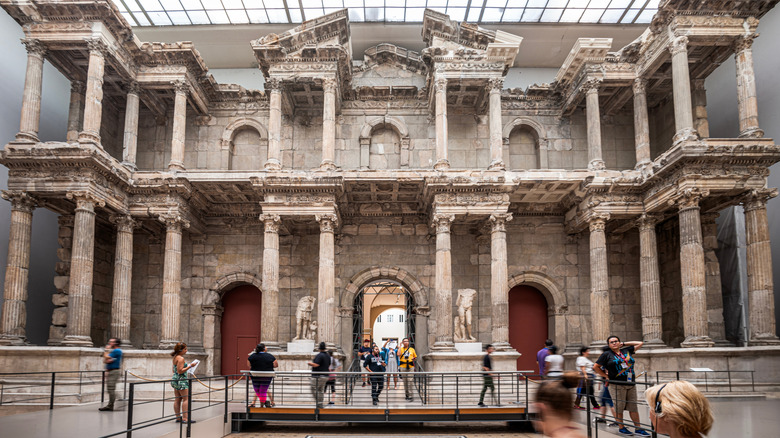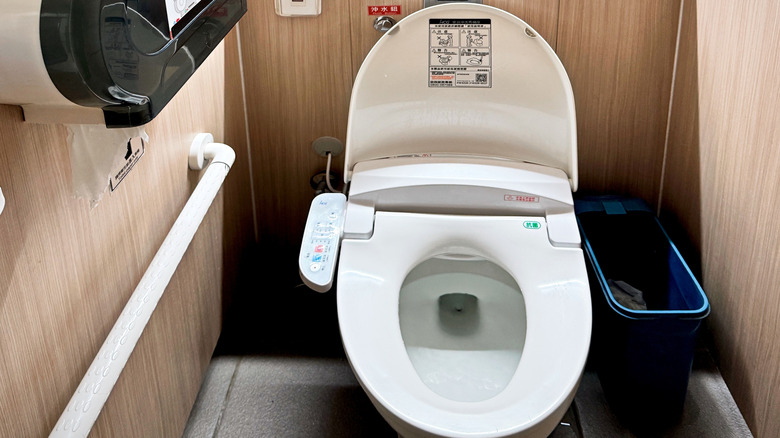The Genius Museum Feature Rick Steves Says Tourists Need To Take Advantage Of Before Leaving
It's the first full day of your vacation, and you've spent the morning walking around a local park, people-watching, and shopping at a street market. Now, you desperately need a restroom. Locating an acceptable public toilet can be difficult while traveling, and bathroom etiquette changes depending on the country you're visiting. One of the top travel tips we've learned from Rick Steves is to always use the restrooms at museums.
On Steves' blog, he writes, "Never leave a museum without taking advantage of its restrooms — they're clean and usually free." So, before ending your perfect family museum trip, see if there's a bathroom in the entry hall. Some museums may even allow you to use these restrooms without paying an admission fee. Keep in mind that in some countries a bathroom attendant is standard, and they expect and deserve a tip (the equivalent of $.50 to $1 is fair).
Consider international toilet paper procedures
Museum restrooms usually have plenty of TP, but in some countries (like China, South Korea, and Cuba), you may want to bring your own toilet paper. Look out for signs telling you not to flush paper, too. In places such as Turkey, Thailand, Greece, and Egypt, these signs warn about the toilet paper mistake you should avoid at all costs. Instead of flushing your TP, throw it in the waste basket. If there's a bidet available, use it.
If you're nowhere near a museum and nature calls, large hotels make an acceptable alternative. Many hotel lobbies have impressive public restrooms, so finding a porcelain throne with plenty of toilet paper shouldn't be a problem.
In parts of Asia, you'll find squat toilets. In some European countries, you'll find bidets. No matter where you roam, learn the local term for referring to a restroom. Ask for the loo in England, the W.C. (short for water closet) throughout Europe, benjo in Japan, or the dunny in Australia.

